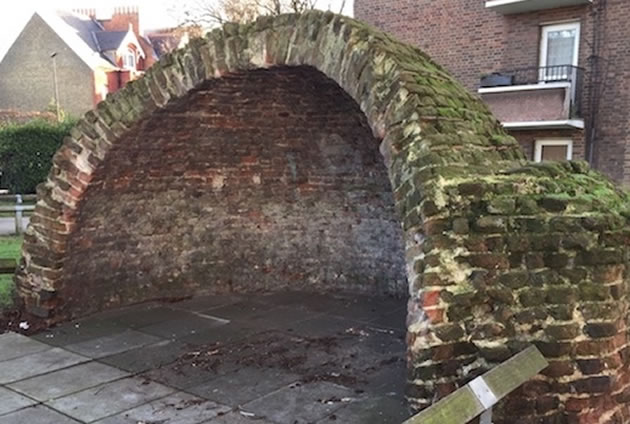Local 'Icehouse' Could Be Item Of Significance
Hounslow Council seeks nominations for buildings of historical or social importance

|
The Grove Park Group is compiling a short list for submission of items which could be deemed to be of local significance, including the ice-house (pictured above) which is situated on Grove Park Terrace.
Many structures, mostly buildings, across England are of national historical or architectural importance. These are protected from inappropriate or damaging alteration by being Grade Listed by English Heritage, for example, Grade I or Grade II.
However there are also many other buildings of local historical or social significance but which are not currently suitable for Grade listing status. Hounslow, like all other authorities across England, maintain a register of these called the Local List.
Periodically Hounslow put out a call for new nominations that local people believe warrant being added to the List. The latest of these is active with a closing date of 7th April 2018.
The Grove Park Group is compiling a short list for submission in this latest call and would like to hear from anyone living in the Grove Park Group area which they believe merits inclusion.
For example they are nominating the icehouse in Grove Park Terrace. Let them know what you would like to nominate at admin@groveparkgroup.co.uk
You can read more about this on their website.
The ice-house at the corner of Fauconburg Parade/Grove Park Terrace has been a feature for discussion on our forum in the past. Here is some information gleaned from a local resident .
A potted history of Ice Houses:
Ice houses were used in the past for the same reason we have a refrigerator
in our kitchen, to keep perishables fresh. The first recorded ice house
in Britain was built at Greenwich in 1619. The heyday of building them
came in the eighteenth century, when no aristocratic estate was without
one. Ice houses were built underground, as a brick-lined pit 25 to 30
feet deep, usually in the shape of a blunt cone with the point downwards.
The pit was covered by a more-or-less ornate domed superstructure with
a north-facing entrance passage.
During the winter, ice would be cut from the frozen lakes and rivers and
packed into the ice house stacked between layers of straw. The insulation
of the straw, bricks and earth packed above it would keep the ice frozen.
The ice would be used to, for example, keep meat fresh and cool down larders
and dairies. It is believed that ice could be preserved in an ice house
like this for up to three years.
March 23, 2018